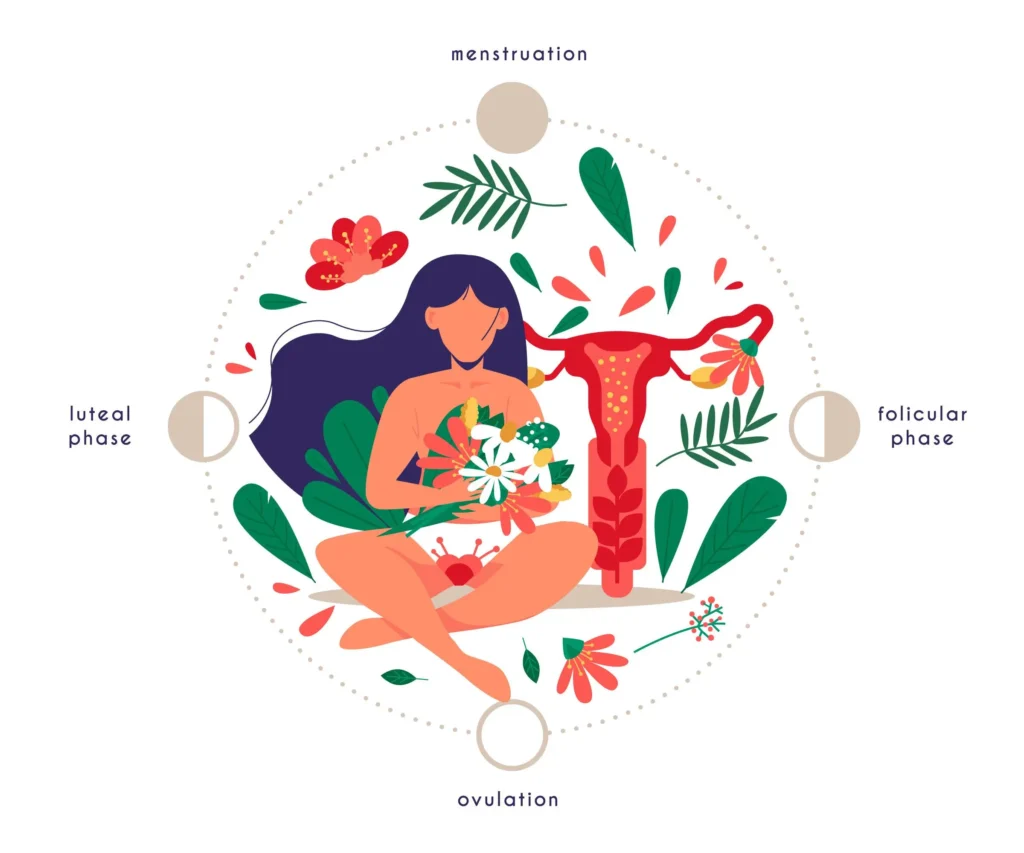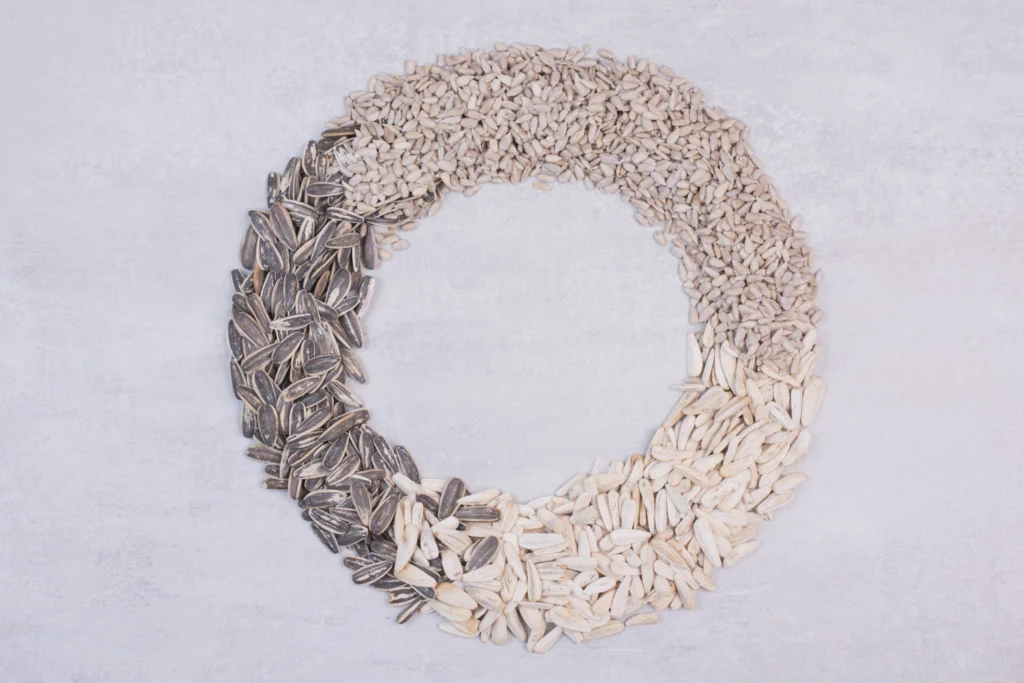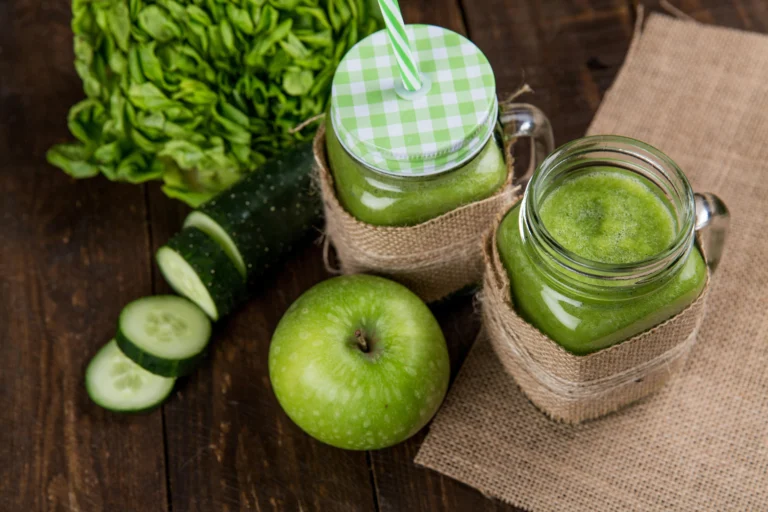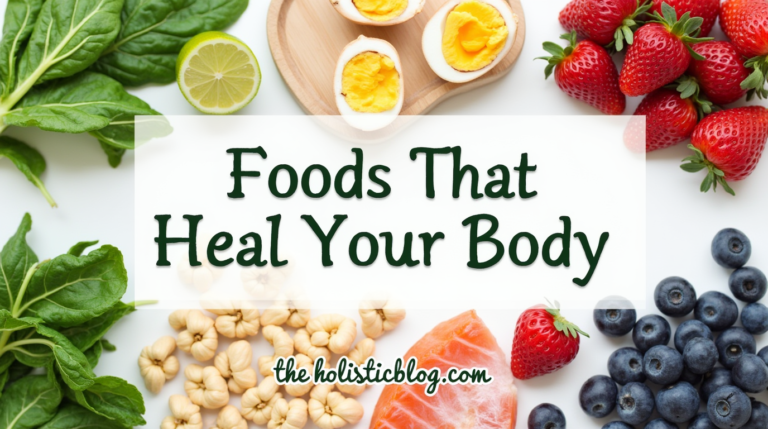The Ultimate Seed Cycling Chart: A Step-by-Step Guide to Boosting Hormonal Health Naturally
Table of Contents
Have you ever wondered if there’s a natural, holistic way to balance your hormones, feel more energized, and even improve your skin and mood? If you’re struggling with hormonal imbalances—whether it’s irregular periods, PMS, or low energy—seed cycling may be the answer you’ve been looking for. This simple, yet powerful practice can help you regain control of your body and support your hormonal health in a natural, non-invasive way.
In this guide, we’ll walk you through everything you need to know about seed cycling, including a detailed seed cycling chart, how to follow it, the science behind it, and even some recipes to get you started. Whether you’re new to the idea or looking to refine your routine, this comprehensive guide will give you all the tools you need to succeed.

What is Seed Cycling?
Seed cycling is a natural method that involves eating different seeds throughout the menstrual cycle to promote hormonal balance. By consuming specific seeds during certain phases of your cycle, you can support the body’s natural production of estrogen and progesterone. The goal is to address hormone imbalances and support overall reproductive health.
The four seeds typically used in seed cycling are:
- Flaxseeds: Rich in lignans, which are plant compounds that act as phytoestrogens (estrogen-like compounds).
- Pumpkin Seeds: High in zinc, which is important for the production of progesterone.
- Sunflower Seeds: Contain essential fatty acids, which are crucial for hormonal health.
- Sesame Seeds: Provide a good source of lignans and help support estrogen production.
By adding these seeds to your diet at specific times during your cycle, seed cycling aims to help regulate estrogen and progesterone levels, ease PMS symptoms, and promote overall hormonal health.
Why Seed Cycling Works: The Science Behind It
You might be wondering—how does this actually work? The answer lies in the unique nutrients found in each of these seeds. Let’s break it down:
- Estrogen Support with Flaxseeds and Sesame Seeds
- Flaxseeds and sesame seeds are rich in lignans, plant-based compounds that act similarly to estrogen in the body. These phytoestrogens can help regulate estrogen levels, especially during the follicular phase (Day 1-14 of your cycle). This is crucial for women who may experience estrogen dominance or have trouble with estrogen metabolism.
- Progesterone Support with Pumpkin Seeds and Sunflower Seeds
- The luteal phase (Day 15-28) is when your body needs progesterone to prepare for a potential pregnancy. Pumpkin seeds are packed with zinc, a mineral that is essential for progesterone production. Sunflower seeds, on the other hand, contain healthy fats and essential vitamins that support progesterone levels during this phase.
- Overall Hormonal Balance
- Seed cycling doesn’t just support one hormone; it helps to balance estrogen and progesterone, both of which are critical for your overall reproductive and health. The balance between these two hormones is key to alleviating symptoms like mood swings, cramps, and bloating, as well as promoting overall health.
How to Follow the Seed Cycling Chart
Now that you understand the science behind seed cycling, it’s time to learn how to incorporate it into your daily routine. Below is the seed cycling chart that breaks down which seeds to eat and when:
Phase 1: Follicular Phase (Days 1-14)
During the first half of your cycle (from Day 1 to ovulation), your body is preparing for ovulation and increasing estrogen levels. During this time, you should focus on consuming flaxseeds and pumpkin seeds to support estrogen production and provide essential nutrients for ovulation.
What to do:
- Flaxseeds: Ground flaxseeds are ideal because they are easier to digest. Aim for 1–2 tablespoons per day.
- Pumpkin Seeds: Pumpkin seeds are rich in zinc, which supports the development of a healthy egg for ovulation. Consume 1–2 tablespoons of raw or roasted pumpkin seeds daily.
Seed Cycling Chart for Phase 1:
| Days | Seeds to Eat | Benefits |
| 1-14 | Ground flaxseeds, pumpkin seeds | Supports estrogen balance, boosts ovulation |
Phase 2: Luteal Phase (Days 15-28)
After ovulation, your body shifts into the luteal phase, and progesterone becomes the dominant hormone. During this time, the focus should be on sunflower seeds and sesame seeds, which help to support progesterone production and reduce PMS symptoms.
What to do:
- Sunflower Seeds: These seeds are a great source of healthy fats and vitamin E, which are crucial for hormone production. Aim for 1–2 tablespoons daily.
- Sesame Seeds: Like flaxseeds, sesame seeds are rich in lignans that help support estrogen levels and improve hormonal balance. Include 1–2 tablespoons of sesame seeds in your daily diet.
Seed Cycling Chart for Phase 2:
| Days | Seeds to Eat | Benefits |
| 15-28 | Ground sunflower seeds, sesame seeds | Supports progesterone, reduces PMS symptoms |

Health Benefits of Seed Cycling
You might be curious about the specific benefits you can expect from incorporating seed cycling into your routine. Here are some key health benefits you may experience:
1. Hormonal Balance
Seed cycling helps regulate estrogen and progesterone levels, addressing hormonal imbalances. By following the seed cycling chart, you may notice improvements in symptoms like heavy periods, irregular cycles, and mood swings.
2. Reduced PMS Symptoms
Women with PMS can often experience bloating, irritability, and fatigue. Seed cycling can help alleviate these symptoms by supporting the body’s natural hormone production and balancing estrogen and progesterone levels.
3. Clearer Skin
Hormonal fluctuations can cause acne and skin breakouts. By supporting balanced hormone levels, seed cycling can help improve skin health and reduce acne associated with hormone imbalances.
4. Increased Energy and Mood Stability
Hormonal imbalances are often linked to fatigue and mood swings. As your hormones begin to balance, you may feel more energized and emotionally stable.
5. Enhanced Fertility
For women trying to conceive, seed cycling can help regulate the menstrual cycle and improve fertility by balancing the hormones necessary for ovulation and conception.
Incorporating Seed Cycling Into Your Daily Routine
Now that you know how seed cycling works, it’s time to add it to your daily diet. Here are some simple ways to incorporate seeds into your meals:
- Flaxseed Smoothie: Add 1 tablespoon of ground flaxseeds to your morning smoothie. This is an easy and delicious way to start your day with hormone-supporting nutrients.
- Pumpkin Seed Snack: Keep roasted pumpkin seeds on hand for a quick snack. They’re crunchy, satisfying, and packed with nutrients.
- Seed Cycling Salad: Toss sunflower and sesame seeds into your lunch salad for a crunchy, nutrient-packed addition.
- Homemade Granola: Mix sunflower seeds and sesame seeds into your homemade granola for a snack that supports your hormonal health.
Common Myths About Seed Cycling
There are several misconceptions about seed cycling. Let’s debunk a few:
Myth 1: Seed cycling is just a fad.
Seed cycling is grounded in science and has been practiced for centuries in traditional medicine. It’s a natural way to support hormone health, not a temporary trend.
Myth 2: You need to follow it strictly for it to work.
While it’s helpful to follow the seed cycling chart closely, you don’t need to be overly rigid. As long as you’re consistently eating the right seeds during the appropriate phases, you can experience benefits.
Myth 3: Seed cycling is only for women with hormone imbalances.
Seed cycling isn’t just for those with hormone imbalances. It’s beneficial for any woman looking to optimize her hormonal health, reduce PMS, or even support fertility.

Conclusion
Seed cycling is a simple, natural, and effective way to support your hormonal health and restore balance to your body. By following the seed cycling chart and incorporating the right seeds at the right times, you can regulate your hormones, improve your skin, reduce PMS, and feel more energized. If you’re ready to take control of your health and feel your best, start seed cycling today.
Ready to get started with seed cycling? Download your own personalized seed cycling chart and begin your journey to hormonal balance today! Share your experiences with us—what changes have you noticed since starting seed cycling?
FAQ Section
What is the best time to start seed cycling?
Start seed cycling on Day 1 of your menstrual cycle, which is the first day of your period. If you don’t have a cycle, you can start whenever, and your body will begin to adapt.
Can I still use seed cycling if I have irregular periods?
Yes, seed cycling can help regulate your cycle, but it may take a few months to see noticeable changes. Patience is key.
How much of each seed should I consume daily?
Aim for 1-2 tablespoons of each seed per day, either ground or whole, depending on your preference.
Does seed cycling work for women in menopause?
Yes, seed cycling can still support hormonal balance during menopause by helping regulate estrogen and progesterone levels.
By following these tips and using the seed cycling chart as your guide, you’ll be well on your way to better hormonal health and a more balanced, energized lifestyle.







